Do home remedies for fleas on cats kill fleas?
Some home remedies kill fleas (e.g. citrus, thyme, and myrtle essential oils) but are toxic to use around cats with unclear safety tolerance levels.
Other home remedies like apple cider vinegar don’t kill fleas.
I recommend talking with a vet about alternative flea treatments.
In this article, I’ll go into detail about whether home remedies for fleas on cats work.
I’ll talk more about what cat fleas are, signs your cat has a flea problem and whether different home remedies help kill fleas.
I am not a veterinarian and I recommend seeking the advice of a vet for any further questions relating to your cat’s health.
Let’s get into the article.
Do Home Remedies for Fleas on Cats Work?
No, most home remedies for fleas on cats do not work.
In fact, many things such as essential oils are toxic to cats.
The majority of fleas exist in the egg life phase.
Whilst vacuuming, dusting, and machine washing pet bedding all work well for destroying adult fleas, the eggs may remain.
Let’s look at some home remedies and what they do.
Apple Cider Vinegar
Apple cider vinegar is a popular nutrition supplement.
One part of apple cider vinegar is acetic acid, which is a known antiseptic.
Whilst this is great for cleaning, apple cider vinegar has no effect on killing fleas. You’ll only make your cat smell like vinegar.
Incidentally, the blood of ruminant animals is high in acetic acid, and this has no effect on parasitic organisms.
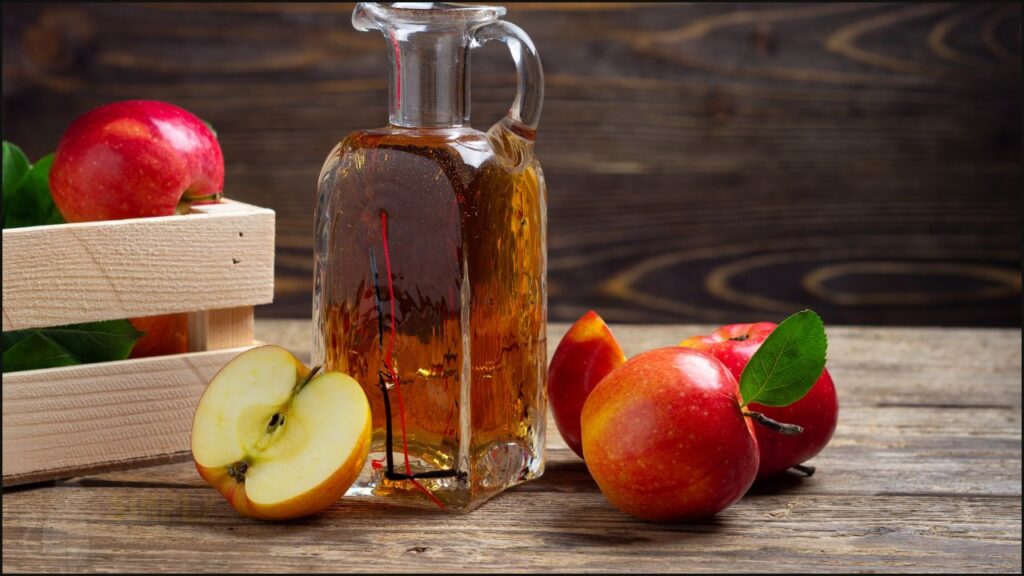
Citrus
Citrus fruits are a popular multi-purpose cleaning product.
These fruits, which include oranges and lemons are also popular home remedies for cats. Diluted citrus used in a spray bottle is the main application of this remedy.
The leaves, peels, fruit, and seeds contain citric acid and essential oils.
Unfortunately, an excessive intake of citrus fruits can lead to your cat having a stomach upset and a depressed nervous system. A small amount of citrus may be safe.
Do citrus fruits kill fleas?
As it turns out, citrus does kill fleas.
Citrus contains the chemical D-Limonene and is toxic to all life stages of the flea, especially eggs. However, the use of citrus directly on cats is unknown.
This is great news, but it’s not known how much citrus is too much.
If you want to use citrus fruits, make sure to dilute the citrus with water and pay attention to any adverse symptoms in your cat.

Essential Oils
Essential oils are another popular natural treatment that many people use with a diffuser around their home.
The problem with essential oils is there are a lot of different types (at least 200) and each has its own risks when used around the cat.
Cats are more sensitive to the toxicity of essential oils due to a lack of liver enzymes.
The essential oils of thyme, myrtle, and yarrow are effective against all types of fleas. Unfortunately, they are also effective at being directly toxic to your cat.
At this point, there are no scientifically proven treatments using essential oils. It is best to be cautious around using these products on your cat.
Learn more:
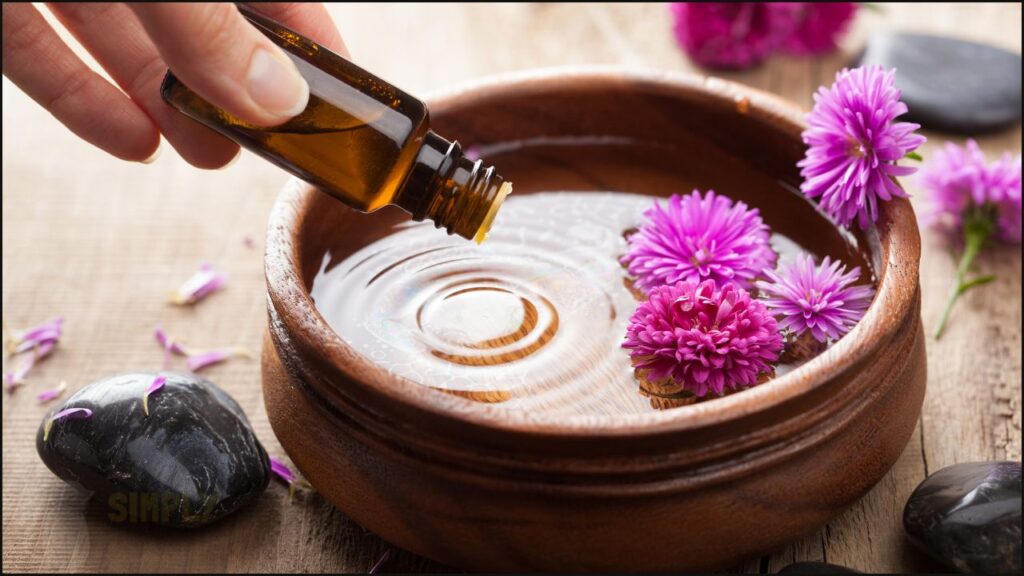
Garlic
Garlic is toxic towards cats at a dose of 5g/kg.
If a 5kg cat eats 25g of garlic it will lead to signs of toxicity such as anemia.
Garlic is well known to contain a variety of anti-microbial properties. All plants of the allium family (e.g. garlic and onions) contain organosulphurated compounds.
Metabolized garlic leads to an increase in oxidative species that damage red blood cells.
Cooking does not reduce the toxicity of these plants.
Cats have a high amount of sulfhydryl groups on the hemoglobin of red blood cells. They are 2-3 times prone to oxidative damage, which can cause hemolysis. This may lead to anemia.
The bottom line is garlic is not safe for use with cats.
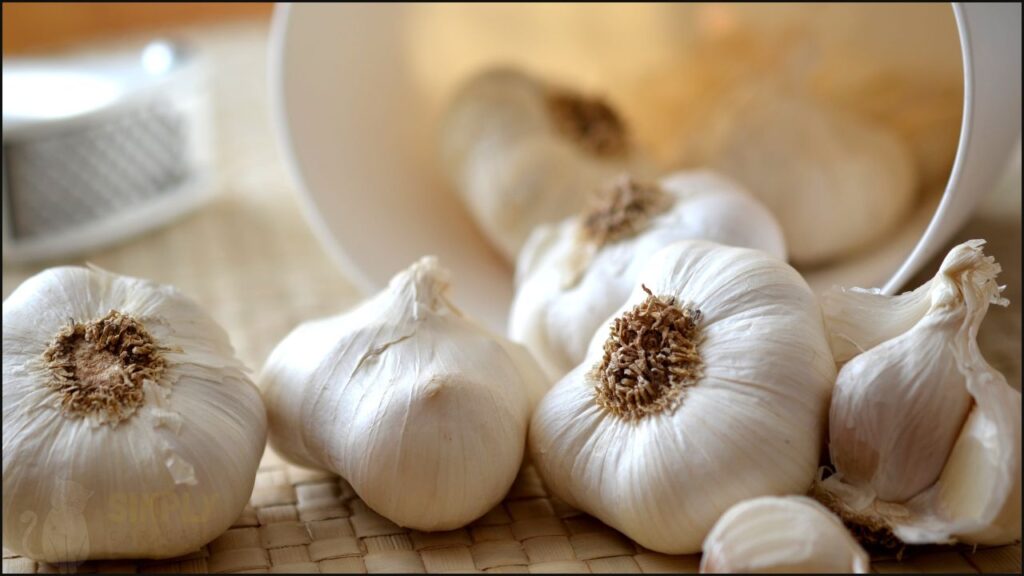
Yeast
Yeast is dangerous for cats and does not kill fleas.
A 2009 study tested yeast over 7 weeks in 20 cat flea-infested dogs. Split into three groups, the dogs got active, inactive yeast, or no treatment (control).
Dogs ate 14g/day yeast daily and the yeast did not significantly reduce flea populations compared to the control group.
Yeast is also dangerous in cats. Yeast ferments in the gastrointestinal system to ethanol (i.e. alcohol) and can lead to toxicity.
It’s a no for yeast.
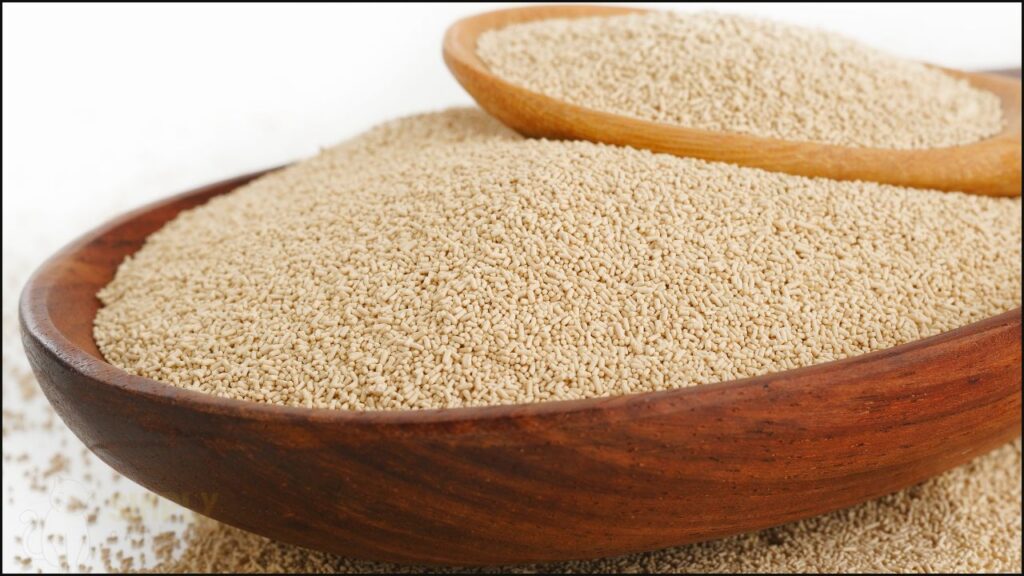
Why the Appeal to Nature Fallacy is Dangerous?
The appeal to nature fallacy is where people believe that something is healthful because it exists in nature.
Anything man-made is bad, whilst anything made by nature is good. Whilst there’s some truth to this in many areas of health, natural doesn’t always mean healthful or effective for fleas.
What matters most is the scientific evidence.
Is the treatment tested on cat fleas?
Is the treatment proven safe for cats?
Many treatments on the internet do not answer these questions.
This is why it is best to take a cautious approach to home remedies.
Learn more:
Frequently Asked Questions
What are Fleas?
Fleas are external parasites.
There are many different types of flea that are unique to different types of animals. The fleas will feed on your pet’s blood, consuming 15x its body weight in blood per day.
Female adults will lay 40-50 eggs per day on your cat. The eggs hatch into small worms and then enter a cocoon state for 1-4 weeks before hatching.
A female adult lays over 2,000 eggs in her lifetime. Eggs transfer to surfaces your cat will come into contact with.
Bottom Line: Fleas are external parasites that feast on blood.
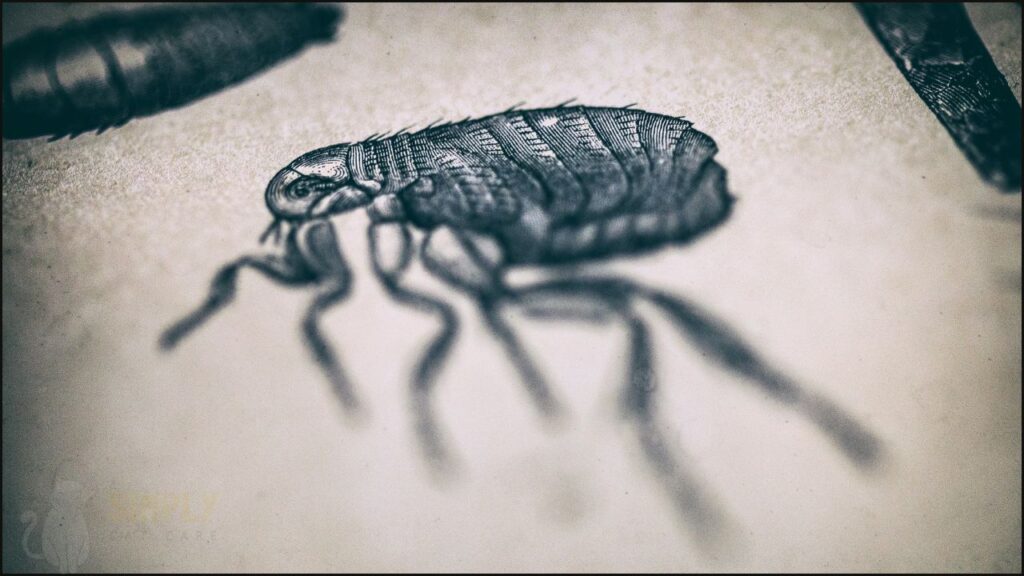
What are Signs Your Cat Has a Flea Problem?
There are many common symptoms of flea infestation. They include:
- Bald patches
- Excessive scratching
- Red spots
- Tiny dark specks (flea waste) on the fur
- Unexplained insect bites around your ankles
A flea comb is useful for finding out whether your cat has a flea problem.
Use a fine cat comb to groom your cat and inspect fleas.
Examine the leftover specks (if any) under running water. If any of the specks turn red, it is due to the blood remnants of flea waste.
This indicates a flea problem.
Bottom Line: Symptoms include scratching, red spots, and bald patches on your cat.
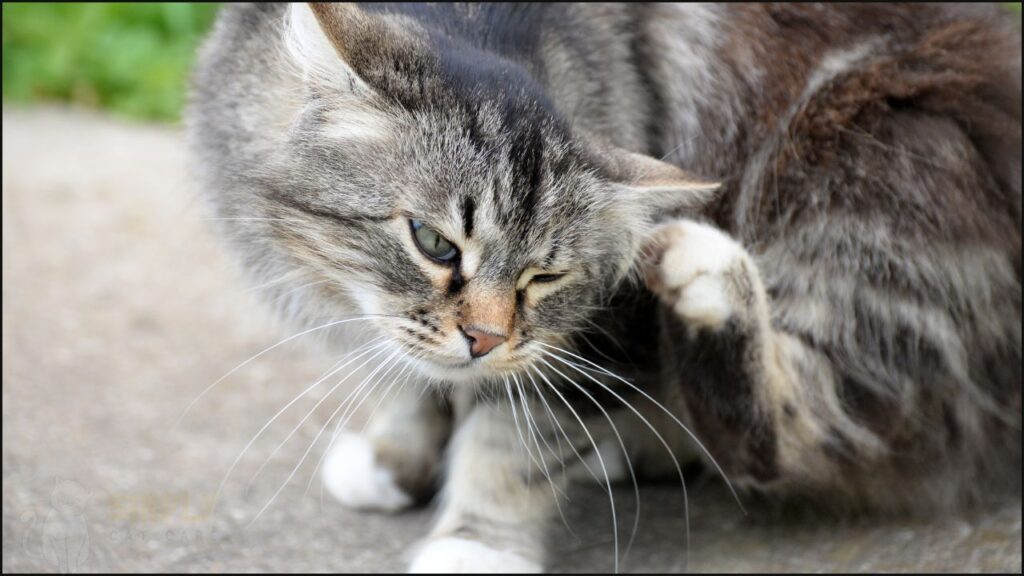
Why are Fleas Bad For Your Cat?
leas can serve as hosts for many serious diseases and problems including:
- Tapeworms
- Cat scratch fever
- Allergies and mouth sores (from grooming)
Whilst not as serious, fleas also interfere with your quality of life.
You might have an infestation in your bed for example, that keeps you up at night.
Cats with flea infestation experience pruritis, which means excessive desire to scratch. This can lead to hair loss, scaly skin, and wounds.
For all these reasons, treating a flea infestation is a good idea. To learn more about treating fleas on your own body, check out this article on how to get rid of fleas on humans.
Bottom Line: Fleas carry diseases such as tapeworms and also cause allergic reactions in cats.
What is the Best Way to Treat Cat Fleas?
The best way to kill fleas is through vacuuming thoroughly.
Vacuuming kills 96% of adult fleas and 100% of younger fleas. The mechanical aspect of vacuuming destroys the outer cuticle layer of fleas, dehydrating them.
This also process also helps destroy eggs and pupae. Whilst the fleas are most likely dead, it is a good idea to dispose of the vacuum bag routinely after use.
Make sure to vacuum all parts of the furniture (e.g. under the couch pads) to get the most out of this method. Steam clean your carpet to remove residual eggs.
A clean house makes it hard for fleas to survive as they thrive in the dust and uncleaned areas. Using a vacuum has a high success rate in destroying the flea population.
For a full guide on preventing fleas in your house, check out this resource.
Bottom Line: Vacuuming more often helps control the flea population by killing destroying adult fleas, eggs, and pupae.
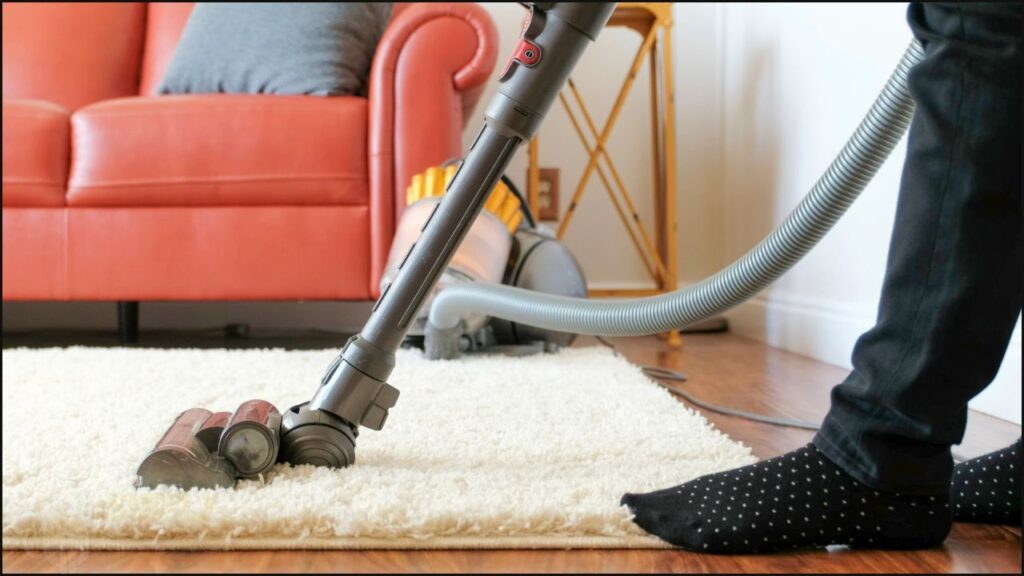
What Else Can I Do to Get Rid of Fleas?
Dusting
Get rid of the dust.
Fleas live among dusty areas, and around organic food matter. Make sure to thoroughly dust your house as well.
A microfiber cloth is a good way to keep dust at bay, as well as a dehumidifier.
Washing Machine
Putting your cat bedding in the washing machine helps kill fleas.
Use a warmer setting and place the bedding to dry in direct sunlight.
Do this once a week to give fleas no chance of survival.
Remember to use a flea comb on your cat to help remove eggs.
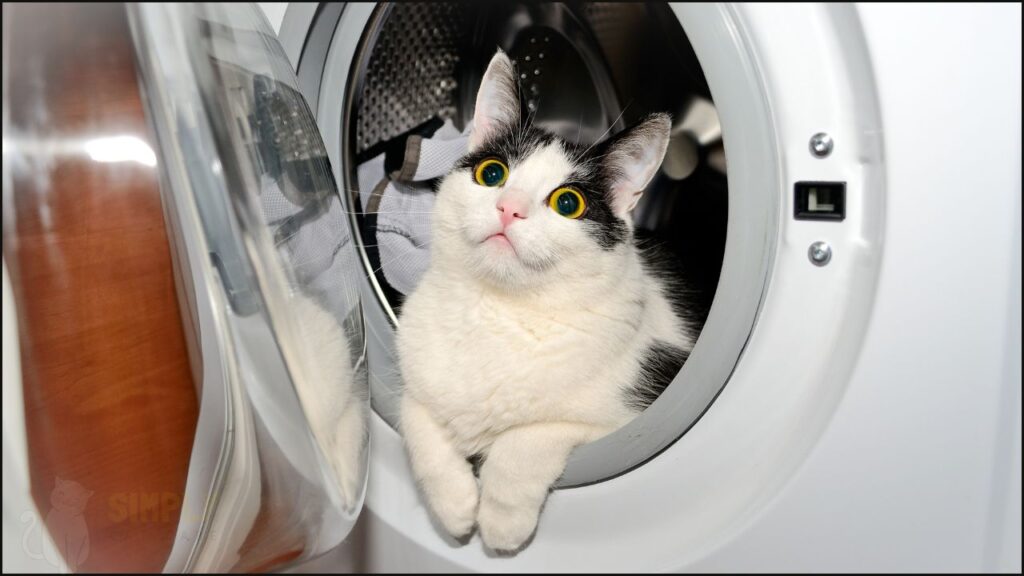
Conclusion
Some home remedies kill fleas (e.g. citrus, thyme, and myrtle essential oils) but are toxic to use around cats with unclear safety tolerance levels.
Other home remedies like apple cider vinegar and salt don’t kill fleas.
Unfortunately, in the health and wellness industry, there are many claims about a lot of things that have little to no scientific basis for their use.
In the case of treating cat fleas, most home remedies don’t pass the test. Cleaning is the best strategy for getting rid of fleas.
